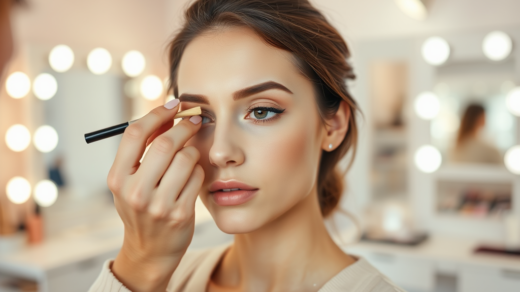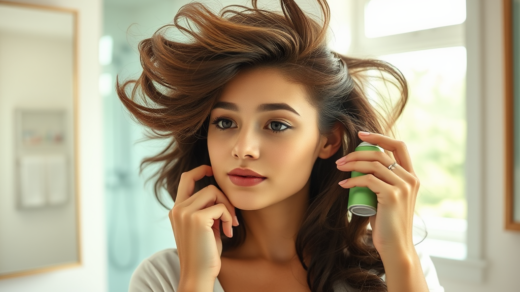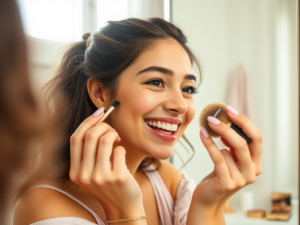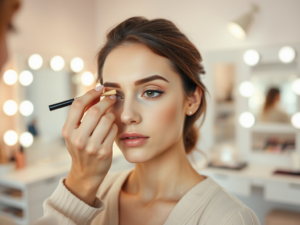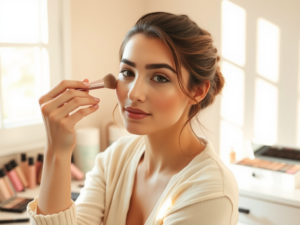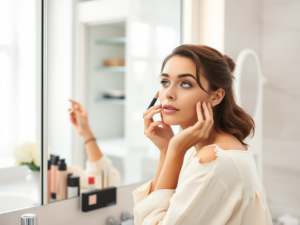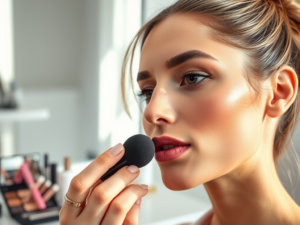The Ultimate Makeup Primers for Every Skin Type
Finding the perfect makeup primer can feel like an endless quest. With so many options on the market, it’s challenging to pinpoint exactly which one will work best for your individual skin type. This article explores the different types of makeup primers available for every kind of skin—from oily to sensitive to combination—ensuring you find the right match for a flawless makeup base every time.
Understanding the Role of Makeup Primers

Makeup primers are essential for creating a smooth canvas for your makeup application, extending the longevity of your foundation, and in some cases, even adding a little extra skincare benefit. These primers act as a protective barrier between your skin and makeup, helping to even out skin imperfections such as pores, fine lines, and redness. Understanding the roles they play can guide you in choosing the most effective primer for your needs.
Primers can be formulated with various ingredients targeting specific skin concerns. For instance, some contain mattifying properties that help control oil production throughout the day. Others might be infused with hydrating agents for those with dry skin to maintain moisture balance. Additionally, some primers offer additional perks like SPF protection or color correction capabilities to address uneven skin tone.
If you have oily skin, selecting a primer that helps control shine and oil production is crucial. A mattifying primer can be your best ally in this scenario. These products typically contain silica or other oil-absorbing ingredients to keep your complexion matte and fresh throughout the day. They create a perfect base for foundations that often slip off oily skin.
Look for primers labeled as “oil-free” or “mattifying” to ensure compatibility with your skin type. Ingredients like salicylic acid can also help keep oil under control while preventing breakouts. A silicone-based primer may be particularly advantageous for its ability to create a smooth surface and fill in enlarged pores, a common concern for those with oily complexions.
Ideal Primers for Dry Skin
For dry skin types, a primer that hydrates while smoothing is key. Hydrating primers often include benefits similar to a rich moisturizer, such as containing hyaluronic acid or glycerin. These ingredients help attract moisture into the skin, ensuring that your makeup applies evenly and doesn’t flake or create dry patches.
When looking for primers for dry skin, consider formulas that are creamy and rich. They may also include illuminating properties which add a subtle glow, giving the skin a dewy, fresh appearance. Hydrating primers strengthen the skin’s barrier, preventing further moisture loss and offering a radiant finish.
Combination skin can often feel like a battling act—navigating oily areas in some parts of the face and dryness in others. For this reason, primers for combination skin aim to balance these two conditions. Such primers offer a dual approach: mattifying formulas take care of the oily zones, while hydrating elements ensure dry areas remain moisturized.
A primer with a gel-like consistency can often work best, providing overall uniformity without feeling heavy. Look for ingredients that balance sebum production like niacinamide, which also soothes redness and irritation. The goal is a well-balanced, even skin tone that allows makeup to adhere beautifully without needing constant touch-ups.
Soothing Primers for Sensitive Skin
Sensitive skin requires gentle handling, making it important to choose primers that are hypoallergenic and free of common irritants such as fragrances or alcohol. A calming primer can help reduce redness and prevent irritation while creating a smooth surface for makeup application. Ingredients such as chamomile, aloe vera, and green tea are beneficial for their soothing properties.
Sensitive skin primers should also focus on strengthening the skin’s protective barrier to enhance its resilience against external aggressors. A fragrance-free primer with added calming extracts can settle reactive skin, providing a stress-free base for your makeup products.
Choosing the right primer involves considering both your skin type and any specific skincare concerns you might have. Once you’ve identified these factors, it’s easier to select a product that will complement your makeup routine seamlessly. Primers are best applied after sunscreen and before foundation, creating an ideal prep layer for further makeup.
Applying primer involves a few simple steps:
- Start with a cleansed and moisturized face to ensure skin is clean and prepped.
- Dispense a small amount of primer onto your fingertips or makeup sponge.
- Gently smooth it over your entire face or focus on areas of concern like the T-zone.
- Allow the primer to set for a few minutes before applying foundation or concealer.
Conclusion
In conclusion, choosing the best makeup primer for your skin type can significantly impact how your makeup wears and looks throughout the day. Whether you’re battling an overly shiny complexion, maintaining hydration, or soothing sensitive skin, there’s a primer designed to meet your needs. Armed with the right information and product, you can ensure that your makeup application starts on a flawless, personalized canvas.
Frequently Asked Questions
What is a primer used for in makeup?
A primer creates a smooth base for makeup application, enhances the longevity of makeup, and can address specific skin concerns like redness or enlarged pores.
Can you use primer without foundation?
Yes, primer can be used alone to smooth out the skin’s surface and provide benefits such as mattifying or hydrating the skin.
How do I know which primer is right for me?
Determine your skin type and any specific concerns you wish to address, such as oil control or hydration, to choose the ideal primer for your needs.
Should I use a different primer in the summer and winter?
Yes, it might be beneficial to switch primers with the seasons, using a more mattifying option during the summer and a hydrating one in the winter.
How much primer should I apply?
A small, pea-sized amount is usually sufficient to cover the entire face. Focus on areas where makeup tends to wear off more quickly or where you have skin concerns.

